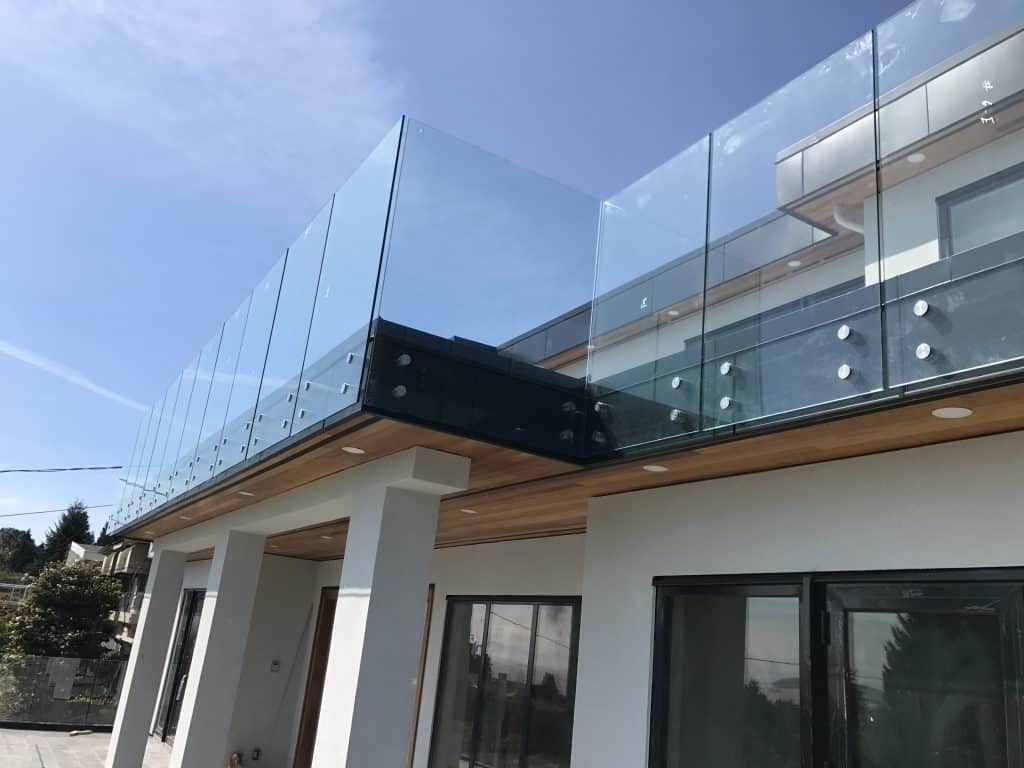In the dynamic world of contemporary architecture and interior design, few elements combine safety, functionality, and stunning aesthetics as effectively as glass railings. Moving beyond bulky traditional balustrades, glass railing systems have become a preferred choice for homeowners, designers, and commercial property developers looking to maximize natural light and preserve precious views.
However, the term “glass railing” encompasses a variety of distinct mounting systems—each offering a unique visual appeal, installation profile, and set of advantages. Choosing the perfect system—whether it’s Standoff, Spigot, Base Shoe, or Post—can feel overwhelming. We’re here to demystify these core options and detail the powerful benefits these modern barriers bring to any space, from a luxury rooftop patio to an interior staircase.
The Spectrum of Glass Railing Systems
Glass railings transform spaces by creating a sense of openness and adding an unparalleled blend of sophistication and safety. These systems fundamentally function as “Guards,” protective barriers around openings or at the sides of stairs and balconies, critical for preventing accidental falls from height.
The various types of glass railing systems are primarily defined by how the glass panels are secured and supported.
1. Frameless Minimalism: Standoff Systems
Standoff systems are arguably the most visually striking and sought-after choice for achieving a truly minimalist aesthetic. Known for their dramatic “floating” appearance, these systems eliminate visible posts and base channels.
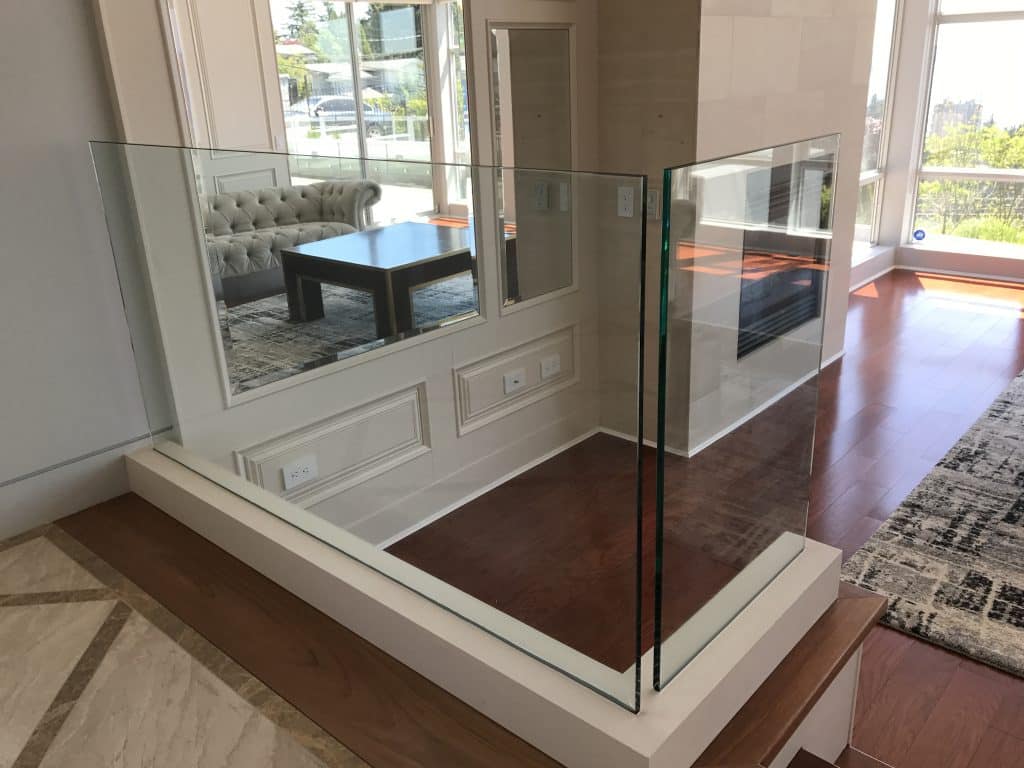
System Overview and Mechanics
In a standoff system, the glass panels are mounted directly to the side (the fascia) of the structure using circular stainless steel spacers, often called standoffs or “button-fixed” supports. This is achieved by carefully drilling precise holes into the glass panels themselves before attaching them to the underlying structure. This method offers a clear, uninterrupted view while maintaining an edge of architectural sophistication.
Key Advantages and Applications
This system excels in tight spaces where floor surface area is at a premium, such as narrow staircases and landings, as the hardware is mounted laterally, saving space. For instance, imagining a high-end loft-style home in downtown Toronto, a standoff system would blend seamlessly with exposed brick and concrete, providing a chic industrial touch.
Despite their sleek look, Standoff systems are strong and durable, offering maximum transparency. They are also comparatively easy to clean and maintain due to fewer visible components. However, prospective users should note the installation complexity, as it requires high precision in the drilling process. Furthermore, this system typically demands thicker glass panels and is not ideal for curved or irregular surfaces. Standoff systems are often used for luxury interior designs, including feature walls, atriums, and mezzanines, lending an element of architectural drama.
2. Grounded Transparency: Spigot Systems
Spigot systems offer a highly effective frameless solution, particularly popular for outdoor applications. Often referred to as “mini-posts,” spigots provide robust support to the glass panels exclusively from the bottom.
System Overview and Mechanics
Spigots are typically made of high-quality, corrosion-resistant stainless steel (such as SS316 or Duplex2205). A major mechanical advantage is the ease of installation: glass panels simply slide into the spigots, and a lateral adjustment screw is used to tighten and secure the glass, meaning no drilling is required in the glass itself. Quality spigots also feature adjustment screws to help level panels perfectly, especially crucial if the mounting surface is not completely straight.
Key Advantages and Applications
The Spigot system is famously used for pool fencing and deck railings because it focuses on maximizing visibility and ensuring safety. Picture a family home in Mississauga with a backyard pool; a spigot system surrounding it offers peace of mind for parents by ensuring a clear line of sight from the house to the water.
This system boasts an easy and quick installation process and versatility, as the spigots can be installed into various substrates, including concrete, timber, or steel. While offering a minimalistic design, a drawback is that they may require regular checking and tightening of components. Additionally, due to their reliance on bottom support, they are less ideal for very high installations where reduced lateral strength could become a concern.
3. Continuous Stability: Base Shoe (U-Channel) Systems
Base Shoe systems, also known as U-channel systems, are the powerhouse of the frameless options, prioritizing continuous support and high stability.
System Overview and Mechanics
This configuration involves setting the thick glass panels into a long, continuous aluminum or stainless steel shoe (or U-channel) that is securely fastened to the floor. The result is a clean, seamless, continuous appearance that can support larger glass panels with minimal movement. The shoe itself can be surface-mounted or embedded into concrete.
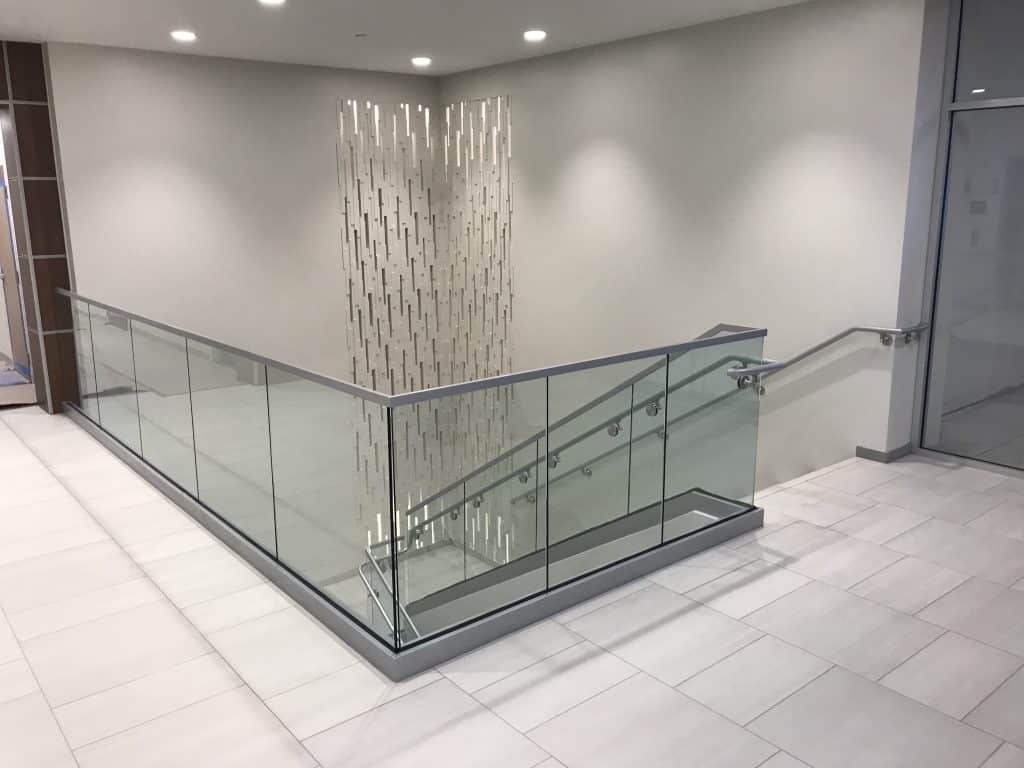
Key Advantages and Applications
Base shoe systems are frequently chosen for their highly durable nature and excellent stability, making them an excellent choice for commercial spaces, high-rise balconies, and public walkways. They are suitable for both interior and exterior use, offering weather resistance, especially when designed with drainage channels.
Imagine an upscale restaurant in Ottawa, where a base shoe system serves as a stylish, highly stable divider between the dining area and the kitchen, allowing patrons to view the culinary process without interference. Although the cost of the base shoe itself makes this option more expensive, and installation can be complex requiring careful alignment and professional expertise, the final result is a nearly invisible, sleek, and highly modern look.
4. Traditional Structure: Post Systems (Framed and Semi-Frameless)
Post systems represent the most traditional form of glass railings, using vertical posts or columns to physically hold the glass panels. These systems fall into the “framed” category, which are generally more affordable and easier to install than frameless alternatives.
Framed Post Systems
In a fully framed system, posts and continuous rails (top and bottom) secure the glass panels. The main advantage of post systems is their design versatility; posts can be crafted from various materials and finishes (such as wood, aluminum, or stainless steel) to perfectly match any aesthetic. Consider a vintage-style home in Guelph, where a post system utilizing wooden posts would blend perfectly with the traditional design while adding a contemporary twist.
Post systems are highly versatile, easily accommodating changes in level and direction, making them ideal for larger, multi-level installations. A drawback, however, is that the vertical posts can partially obstruct the view compared to frameless options. They also require regular maintenance to prevent corrosion, especially if using materials like wood or traditional metals.
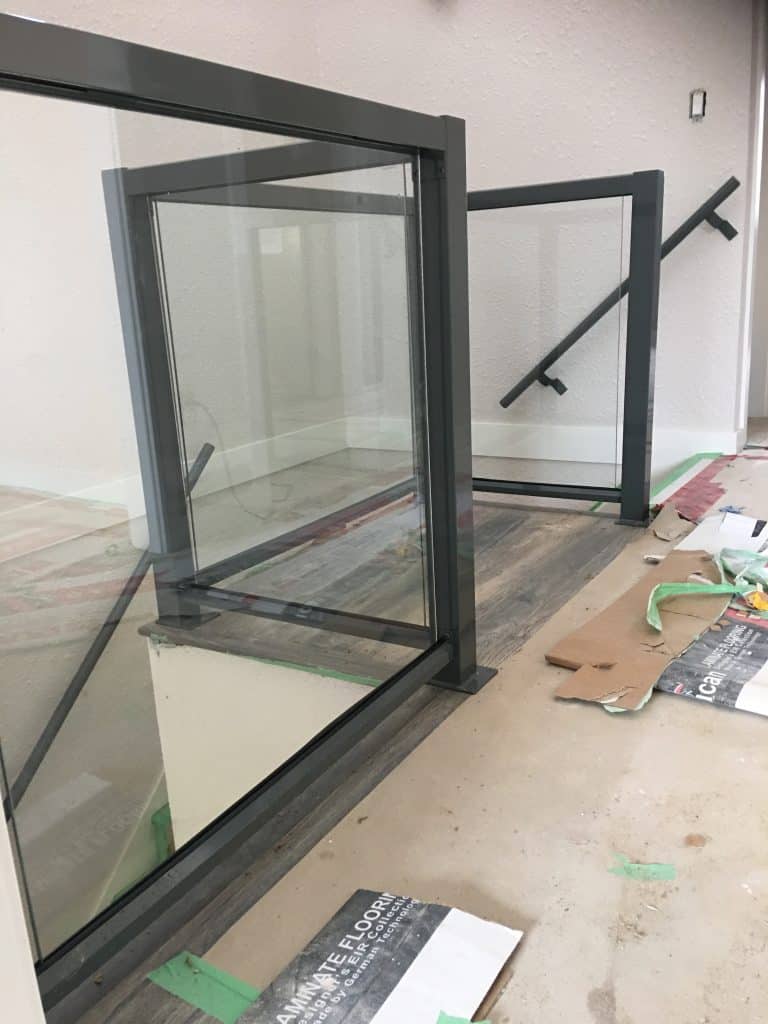
Semi-Frameless Systems
A compromise between fully framed and fully frameless, semi-frameless railings utilize vertical posts (often aluminum) but deliberately omit the top rail. This design provides a budget-conscious option that still delivers visual openness and enhanced stability suitable for residential decks and multi-unit buildings. An added benefit is the ease of repair, as panels can be swapped out without dismantling the entire structure.
Top-Rail Integration
Many systems, regardless of whether they are framed or frameless, include a Top-Rail (or continuous handrail) mounted on the top edge of the glass. This is often a necessity for code compliance in specific locations, such as interior staircases or commercial ramps, where a graspable handrail is mandated. The top rail adds an extra layer of safety by preventing edge damage to the glass and providing structural support. These rails can be customized in materials like wood, stainless steel, or powder-coated aluminum, adding design flexibility.
Critical Design and Safety Considerations
Regardless of the chosen mounting system—be it Standoff, Spigot, Base Shoe, or Post—the foundation of a successful glass railing lies in the quality of the materials and strict adherence to safety standards.
Glass Type and Required Thickness
The glass used in railings must be durable and safe. Building codes generally mandate the use of tempered or laminated safety glass.
- Tempered Glass: This is the most common and affordable option. It is inherently stronger than standard glass. If it breaks, it shatters into small, blunt fragments, reducing the risk of serious injury. For typical residential and commercial applications, 10mm (3/8 inch) tempered glass is often considered a common and safe thickness.
- Laminated Glass: Laminated glass includes an extra protective interlayer (often a polymer) between two panes of glass. This material is stronger and is often preferred, especially for high-traffic or elevated areas, because if the glass shatters, the fragments remain held together by the interlayer, preventing them from falling. Laminated glass is generally more expensive, and a thickness of 12mm (1/2 inch) or thicker is frequently recommended for high-safety applications.
- Usage and Location: Railings exposed to heavy foot traffic, high impact, or harsh outdoor weather (such as high wind loads) may require thicker glass—12mm or more—to prevent breakage. Standoff systems, due to their point-supported nature, also generally require thicker glass.
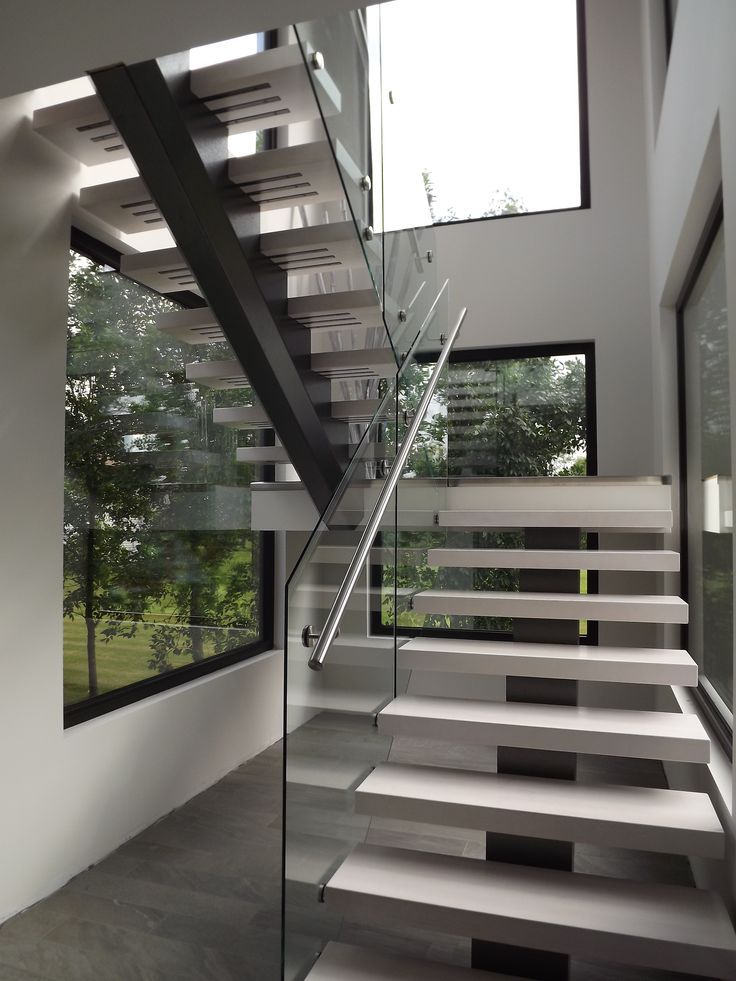
Structural Integrity and Load Requirements
Guards are critical for life safety. Therefore, all glass railing systems must be structurally sound, durable, and legally compliant. The system must be designed to resist substantial weight and meet local horizontal and vertical load-bearing requirements.
In jurisdictions like Toronto, compliance with the Ontario Building Code (OBC) is mandatory. For residential decks or balconies more than 600mm off the ground, railings must be at least 42 inches (1.07m) high, and indoor stair railings must typically be at least 36 inches (0.91m) high. Crucially, non-compliant installations can void insurance and lead to failed inspections.
It is required that all guards containing glass components or glass acting as a guard be designed by a Professional Engineer. The engineer must ensure the design adheres to applicable standards like CAN/CGSB-12.20-M89 for the structural design of glass, or newer standards like CSA A500 Building Guards. The design must also ensure that the substrate to which the Guard is attached is strong enough to sustain all loads.
Performance, Maintenance, and Cost Considerations
Choosing the right system also involves practical considerations regarding maintenance and budget, particularly in the challenging Canadian climate.
Performance in Harsh Canadian Winters
Glass railings are engineered to handle heavy snow, icy winds, freezing temperatures, and constant shifts between thaw and freeze.
- Durability: The panels, made from strong tempered safety glass, are designed to withstand the weight of snow and ice without cracking or weakening. The accompanying frames (aluminum or stainless steel) are superior to wood and metal in harsh conditions.
- Temperature Resistance: Glass railings are built to handle sudden shifts from freezing cold to milder temperatures, remaining stable and strong through extreme freeze cycles.
- Moisture and Salt Protection: Unlike wood, which can warp, or iron, which can rust, the aluminum and stainless steel components in glass railings are highly resistant to rust and corrosion caused by constant moisture and road salt exposure.
- Clear Views: A major advantage of glass is that it maintains the scenic view even when the surroundings are covered in snow, unlike opaque wood or metal railings which block the scenery.
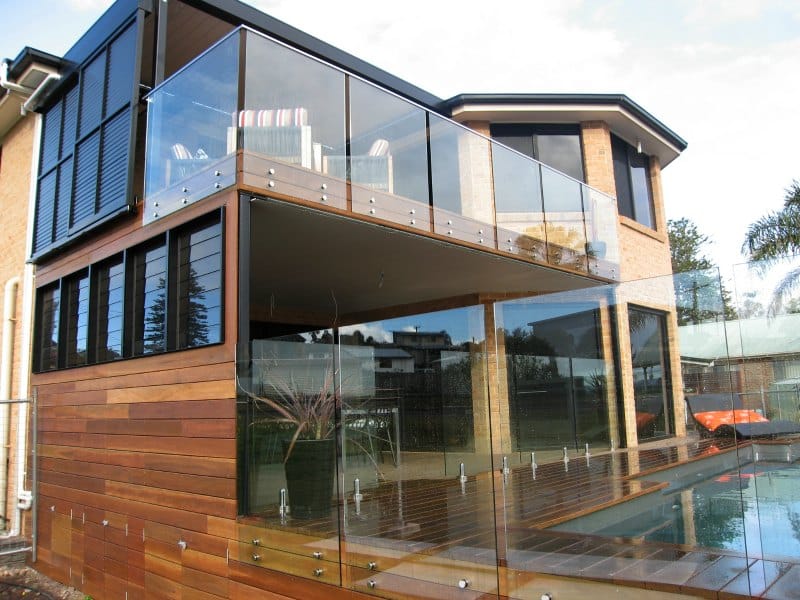
Maintenance and Cost Comparison
Glass railings are often lauded as a low-maintenance option. Unlike wood railings that require regular staining or metal that needs painting to prevent corrosion, glass simply requires regular cleaning to keep the panels clear of dust and grime. In winter, snow and ice tend not to stick to the smooth glass surface, often requiring only a quick brush or sweep for removal. Care should be taken to avoid harsh chemicals or rock salt on the metal frames, opting instead for warm water and mild soap.
Glass railings are generally a premium product compared to other materials:
| Material | Cost Per Linear Foot | Pros | Cons |
|---|---|---|---|
| Glass (Framed) | $150 – $300 | Modern look, low maintenance | Can show fingerprints |
| Glass (Frameless) | $300 – $600 | Unobstructed view, high-end look | Higher cost, complex installation |
| Metal (Stainless Steel) | $100 – $400 | Sleek, durable | Can rust or corrode outdoors |
| Wood | $50 – $200 | Warm appearance, affordable | Requires regular maintenance |
The cost is highly dependent on the chosen system: Framed options are significantly cheaper than frameless designs. Installation costs can range from $50 to $200 per linear foot, with complex frameless or multi-level projects landing on the higher end. For those looking to save money, choosing framed over frameless, sticking to standard glass panel sizes rather than custom cuts, and securing multiple quotes are excellent strategies.
Final Conclusion
The revolution in glass railing design offers unparalleled opportunity to enhance both the safety and aesthetic appeal of residential and commercial spaces. Whether your priority is the pure, unobstructed view achieved by Standoff and Base Shoe systems, the robust outdoor safety of Spigot railings, or the design versatility offered by Post systems, there is a solution tailored to your architectural vision.
The optimal choice of glass railing system hinges on key factors, including the overall design aesthetic, the location (interior vs. exterior), safety requirements, and your budget. Regardless of the selection, these systems consistently deliver durability, structural integrity, and a modern, sophisticated edge that significantly increases property value and enhances curb appeal. By carefully considering the structural requirements, building code mandates, and the unique advantages of each system, you can select the perfect glass railing to redefine your space and turn your vision into a stunning reality.

